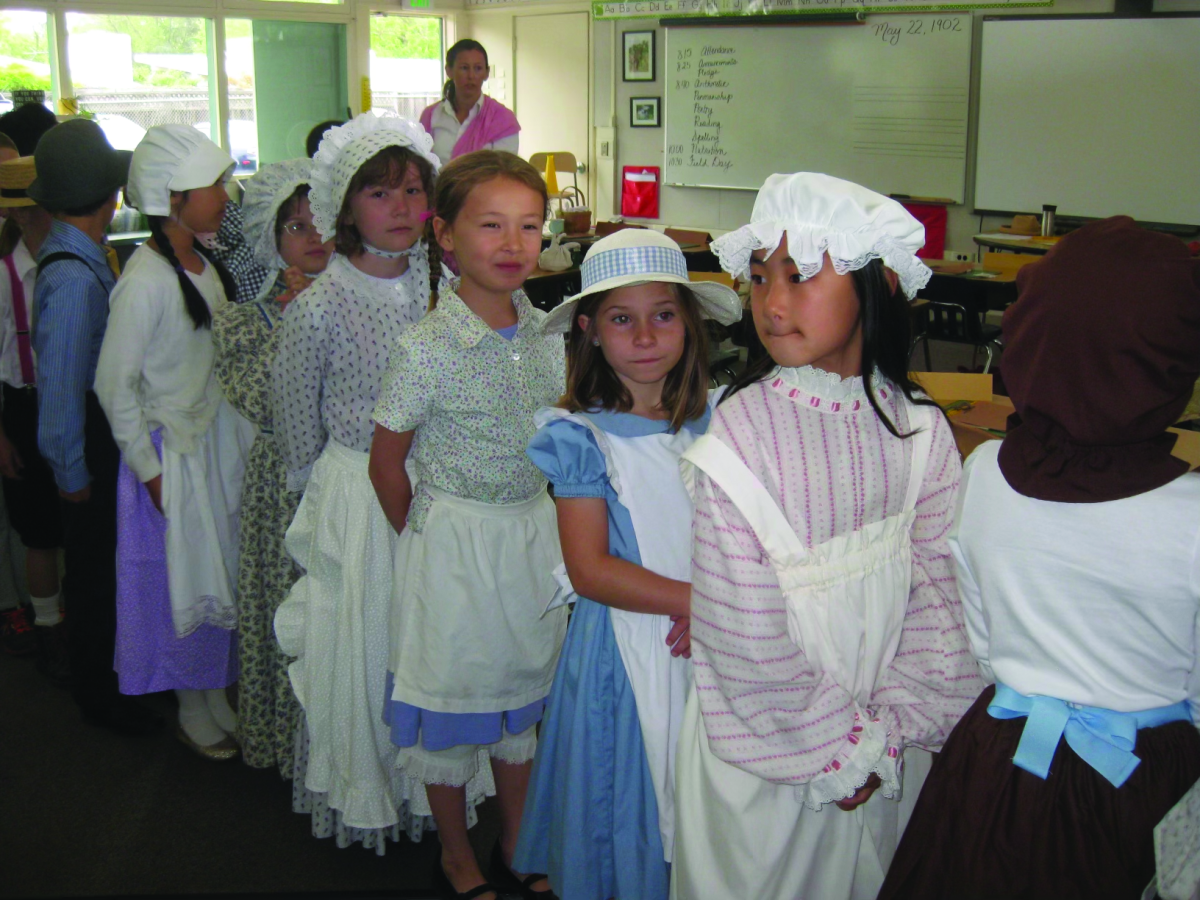It was the highlight of the year for many Ohlone Elementary School students: the first day of the historical simulations. Kids showed off their homemade costumes while parent volunteers herded kids towards different activities. For participating grades, school ground to a halt for a week. This was the culmination of months of preparation.
Why did Ohlone go through all this effort instead of teaching history in a traditional manner? The school’s unique approach stems from its philosophy of project-based learning, which aims to build critical thinking skills in students and improve their collaboration and problem-solving abilities.
According to former Ohlone teacher Otak Jump, who was significantly involved in the past simulations, Ohlone’s philosophy aims to teach students real-world skills, with an aimto engage students on a more intimate level with the material they are learning.
“If you don’t get students to engage and be excited about the activity, you can teach them all the preliminary fundamental stuff, [but] they won’t come away from the experience wanting,” Jump said. “That is sort of the key element of simulations.”
A study by Dimitrios Vlachopoulos and Agoritsa Makri of European University, Cyprus, indicated that simulation and game-based learning have positive effects on knowledge acquisition and can help students better understand concepts, exercising their critical thinking skills in the process.
From the school’s founding until the COVID-19 pandemic, simulations were deeply ingrained into the Ohlone curriculum. Before they were halted, there used to be four simulations, two a year.
There were two one-day simulations for the second and third-graders focused on Old Palo Alto and the Ohlone American Indians. For the fourth and fifth-grade students, there were two three-day simulations, one centered around the California Gold Rush and the other around the American Revolution.
“They [the simulations] had a narrative and a story arc that went over all three days … it was a simulation where the kids experience going back in time and go through a series of events that build on one another,” Jennifer Gols, a former Ohlone parent, said. “They might start by working to get to the New World, then they figure out how to make a living and how to build a town there.”
Now, an activity called Trades Day has replaced the entire simulation-based curriculum. In this new activity, students move from room to room practicing different disciplines from the colonial days, from baking to sewing. While still hands-on, it takes away the immersive elements of the simulations, according to Rowena Chiu, president of the Parent-Teacher Association at Ohlone.
“I think Trades Day is a compromise solution and a form … of replacing the full simulation experience,” Chiu said. “[But] I don’t think it is as rich as the Ohlone simulations used to be.”
Experimental methods of teaching history have been prominent in Palo Alto’s past. In the 60s, former Palo Alto High School teacher Ron Jones conducted the infamous Third Wave experiment at the now-closed Cubberley High School. In this experiment, Jones aimed to illustrate how Hitler was able to rise to prominence by mimicking the conditions of living under a totalitarian dictatorship.
Like the Third Wave experiment, the Ohlone simulations aimed to help students better understand history by directly experiencing it.
Since the start of the COVID-19 pandemic in March 2020, Ohlone has not held any new simulations. According to Chiu, it may have been in avoidance of the more controversial aspects of simulations.
“I think the school looked long and hard at the way the simulation was done and had to rethink about how it represented only a certain portion of the people that lived in this area, and that the simulation wasn’t representative of the … diverse history of the Bay Area,” Chiu said.
Some say simulations stray into the territory of cultural appropriation. According to the National Museum of the American Indian, events where schools ‘dress up’ students as American Indians, like in the Ohlone American Indian simulation, “suggest that Native cultures exist only in the past.”
But Paly junior and former Ohlone student Katie Bradley said she believes simulations had more positives than negatives.
“I understand why people don’t like them [simulations],” Bradley said. “I loved them. You’re getting to hang out with your friends and experience what it was like [back then].”
Paly sophomore and former Ohlone student Smaran Narayanan recalls participating in the Ohlone American Indian simulation in third grade.
“I think both [traditional education and simulations] have benefits, but simulations also are more engaging and help students learn more about daily life in historical settings,” Narayanan said. “They [simulations] were more activity-focused rather than focusing on historical events, so I think they could have covered more of that [historical] aspect.”
While it is unclear whether simulations will return to Ohlone, they remain a fond memory among many in the Ohlone community. Some, such as Gols, hope the simulations can return in the future.
“I think that [removing the simulations] is a shame because I chose Ohlone for my kids because I was really supportive of those alternative education methods,” Gols said. “I would very much like to see them [the simulations] come back.”
Former Ohlone teacher Otak Jump’s website explaining the simulations:





